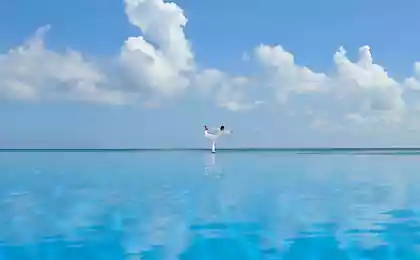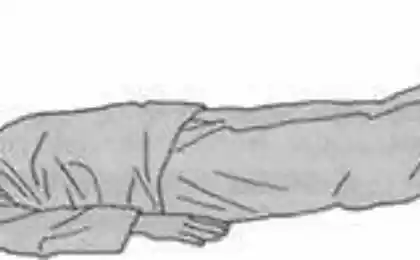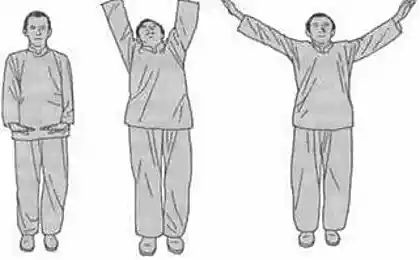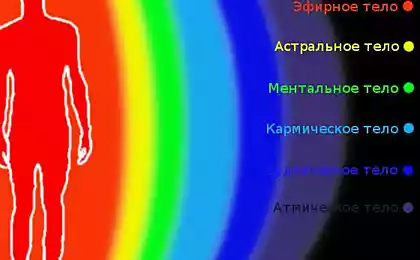654
To strengthen the body and prolong life: 14 Simple qigong exercises
Wellness Massage belongs to the category of mobile rehabilitation methods in the system of Qigong exercises. It is characterized by "rehabilitation through movement", which are very simple and easy to implement.
In the era of the Ming dynasty (1368 to 1644), this method is widely used in China. It has proved popular as an excellent rehabilitation tool, body strengthening and extension of life - provided that it is frequent and persistent application
.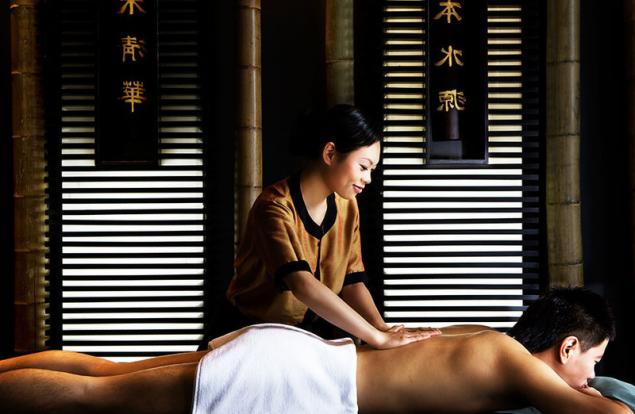
1) Combing hair. Frequent combing hair (in addition to personal hygiene) helps to strengthen vision and relieves headache when it appears. The method consists in the fact that the hair gently comb in the morning, and this process is repeated ten times a day.
< 2) Dry ablution face. Frequent washing of the face dry eliminates various pathogenic factors, and the side the effect is that the face is not smoothed wrinkles.
A method for performing: rub your hands together until you feel the heat, and then impose them on his nose, and drag them up on both sides of the nose, pressing, mainly middle fingers. Once your fingers fall on the forehead, they move apart slightly and slip a slight movement on both sides of the forehead down. Repeat this movement 30 times.
< 3) Exercise for the eyeballs. Frequent execution of exercises for eyeballs can cure cataract and corneal opacity, as well as get rid of farsightedness and nearsightedness.
implementation method: turn the eyeballs first in the direction from left to right and then from right to left. The movements must be performed at a slow pace. After completing the rotation to 14 times in each direction, close the eyes for a while, and then suddenly and widely open them and "grab" the visual impression.
< 4) Tapping on the ears. Strong > Frequent execution of tapping on the ears can prevent dizziness and a feeling of tinnitus.
A method for performing: cover your ear canals with both hands and push the index finger to the middle. Easy prostuchite forefingers back of the skull 24 times.
< 5) Tapping teeth. allows Tapping teeth painlessly strengthen the roots of the teeth.
implementation method: somknite teeth of the upper and lower jaw as if chewing food. Knock them up and down 24 times.
< 6) Licking the mouth. The ancient Chinese believed saliva treasure of the human body and called it "the golden juice" and "jade wine." Licking oral language is able to induce the secretion of saliva.
implementation method: lick the tip of the tongue space between the lips and teeth, drawing them from left to right and right to left. Repeat this movement 30 times in each direction.
< 7) swallowing saliva. The ancient Chinese believed swallowing saliva a good way to irrigate "the five internal organs" and "six cavities" and limb humidification , joints and body hair.
A method for performing Swipe to the top of the oral tongue and rinse your mouth with saliva formed 36 consecutive movements. Then easily swallowed three full sips.
< 8) Inflating the chest. In carrying out this exercise, it is possible to advance the jammed food and get rid of the feeling of fullness in the chest and diaphragm.
A method for performing: holding your breath, inflate the chest and abdomen to the maximum, and then lift your head, open your mouth and exhale sharply harmful gas. Exercise should be repeated 5-7 times.
< 9) Rubbing the stomach. Belly Rubbing helps calm the mind and promote jammed food.
A method for performing: rub your hands together until they feeling the heat, then put them together right on the bare stomach or clothing unlined. Rub the belly clockwise middle of the palm, making a circular motion around the navel. Describe palm small, medium and large circles -.. Twelve times each
10) Reduction sphincter The ancient Chinese called this exercise "lifting the rice aisle." It contributes to raising up Yangqi (chi positive energy).
A method for performing: quite vigorously inhale the air and cut the muscles of the anus and perineum. Some time hold this position, then exhale and relax your muscles. Do exercise 5-7 times.
< 11) Shaking limbs. This exercise helps to stretch your joints of the hands and feet.
Method of performance: strong grip both arms with his hands. Turn first left shoulder forward, then right, as if turning the gate. Rotate the shoulders in both directions 24 times each, and then sit quietly. Lift the left leg and slowly pull the sock up. At a time when the left leg will be almost fully extended, sharp throw left heel outwards. Repeat this movement five times. Then do the same exercise the right foot.
< 12) Rubbing the arch of the foot. The ancient Chinese called this exercise "rubbing Yongquan point." This acupuncture point is located in front of the inside of the arch of the foot (a distance of one third of the length of the foot from the toe). Rubbing this point strengthens the kidneys and the suppression of the residual excitation that is engaged in helping to prepare for bed.
Method of implementation: first rub his left foot, then right. Repeat the movement 50-100 times for each foot.
< 13) Dry Bath. Dry bath mitigates the circulation of qi and blood circulation and makes the skin smooth and shiny.
implementation method: rub your hands together until you feel the heat, and then rub the body. Grinding is carried out in the general direction of the Bai Hui point-to-face and covers the left and right shoulders, both arms, chest and abdomen, and then - on both sides of the torso to the waist and, finally, comes to foot
<. 14) relaxation of muscles and ligaments. The ancient Chinese believed that this exercise helps to relax the muscles and ligaments as well as activation of the energy flow of qi and blood in the channels and branches.
Method of performance: sit on the bed, stretching out his legs. Tilt your head back and pull the arch of the foot at the same time with both hands twelve times in a row. In between these movements several times prohlopali femur and tibia.
The above health massage is best performed in the following sequence:
exercise on combing hair - early in the morning,
exercises on the washing of the face and relaxation of muscles and ligaments - immediately after waking up,
exercise in rubbing Yongquan point - after washing feet before bedtime
. The remaining ten exercises can be done twice a day - all together or selectively in handy for training sequences.
In the era of the Ming dynasty (1368 to 1644), this method is widely used in China. It has proved popular as an excellent rehabilitation tool, body strengthening and extension of life - provided that it is frequent and persistent application
.

1) Combing hair. Frequent combing hair (in addition to personal hygiene) helps to strengthen vision and relieves headache when it appears. The method consists in the fact that the hair gently comb in the morning, and this process is repeated ten times a day.
< 2) Dry ablution face. Frequent washing of the face dry eliminates various pathogenic factors, and the side the effect is that the face is not smoothed wrinkles.
A method for performing: rub your hands together until you feel the heat, and then impose them on his nose, and drag them up on both sides of the nose, pressing, mainly middle fingers. Once your fingers fall on the forehead, they move apart slightly and slip a slight movement on both sides of the forehead down. Repeat this movement 30 times.
< 3) Exercise for the eyeballs. Frequent execution of exercises for eyeballs can cure cataract and corneal opacity, as well as get rid of farsightedness and nearsightedness.
implementation method: turn the eyeballs first in the direction from left to right and then from right to left. The movements must be performed at a slow pace. After completing the rotation to 14 times in each direction, close the eyes for a while, and then suddenly and widely open them and "grab" the visual impression.
< 4) Tapping on the ears. Strong > Frequent execution of tapping on the ears can prevent dizziness and a feeling of tinnitus.
A method for performing: cover your ear canals with both hands and push the index finger to the middle. Easy prostuchite forefingers back of the skull 24 times.
< 5) Tapping teeth. allows Tapping teeth painlessly strengthen the roots of the teeth.
implementation method: somknite teeth of the upper and lower jaw as if chewing food. Knock them up and down 24 times.
< 6) Licking the mouth. The ancient Chinese believed saliva treasure of the human body and called it "the golden juice" and "jade wine." Licking oral language is able to induce the secretion of saliva.
implementation method: lick the tip of the tongue space between the lips and teeth, drawing them from left to right and right to left. Repeat this movement 30 times in each direction.
< 7) swallowing saliva. The ancient Chinese believed swallowing saliva a good way to irrigate "the five internal organs" and "six cavities" and limb humidification , joints and body hair.
A method for performing Swipe to the top of the oral tongue and rinse your mouth with saliva formed 36 consecutive movements. Then easily swallowed three full sips.
< 8) Inflating the chest. In carrying out this exercise, it is possible to advance the jammed food and get rid of the feeling of fullness in the chest and diaphragm.
A method for performing: holding your breath, inflate the chest and abdomen to the maximum, and then lift your head, open your mouth and exhale sharply harmful gas. Exercise should be repeated 5-7 times.
< 9) Rubbing the stomach. Belly Rubbing helps calm the mind and promote jammed food.
A method for performing: rub your hands together until they feeling the heat, then put them together right on the bare stomach or clothing unlined. Rub the belly clockwise middle of the palm, making a circular motion around the navel. Describe palm small, medium and large circles -.. Twelve times each
10) Reduction sphincter The ancient Chinese called this exercise "lifting the rice aisle." It contributes to raising up Yangqi (chi positive energy).
A method for performing: quite vigorously inhale the air and cut the muscles of the anus and perineum. Some time hold this position, then exhale and relax your muscles. Do exercise 5-7 times.
< 11) Shaking limbs. This exercise helps to stretch your joints of the hands and feet.
Method of performance: strong grip both arms with his hands. Turn first left shoulder forward, then right, as if turning the gate. Rotate the shoulders in both directions 24 times each, and then sit quietly. Lift the left leg and slowly pull the sock up. At a time when the left leg will be almost fully extended, sharp throw left heel outwards. Repeat this movement five times. Then do the same exercise the right foot.
< 12) Rubbing the arch of the foot. The ancient Chinese called this exercise "rubbing Yongquan point." This acupuncture point is located in front of the inside of the arch of the foot (a distance of one third of the length of the foot from the toe). Rubbing this point strengthens the kidneys and the suppression of the residual excitation that is engaged in helping to prepare for bed.
Method of implementation: first rub his left foot, then right. Repeat the movement 50-100 times for each foot.
< 13) Dry Bath. Dry bath mitigates the circulation of qi and blood circulation and makes the skin smooth and shiny.
implementation method: rub your hands together until you feel the heat, and then rub the body. Grinding is carried out in the general direction of the Bai Hui point-to-face and covers the left and right shoulders, both arms, chest and abdomen, and then - on both sides of the torso to the waist and, finally, comes to foot
<. 14) relaxation of muscles and ligaments. The ancient Chinese believed that this exercise helps to relax the muscles and ligaments as well as activation of the energy flow of qi and blood in the channels and branches.
Method of performance: sit on the bed, stretching out his legs. Tilt your head back and pull the arch of the foot at the same time with both hands twelve times in a row. In between these movements several times prohlopali femur and tibia.
The above health massage is best performed in the following sequence:
exercise on combing hair - early in the morning,
exercises on the washing of the face and relaxation of muscles and ligaments - immediately after waking up,
exercise in rubbing Yongquan point - after washing feet before bedtime
. The remaining ten exercises can be done twice a day - all together or selectively in handy for training sequences.
15 star couples who prove that true love can last forever
Scientists have figured out how to reduce the cost of solar panels





